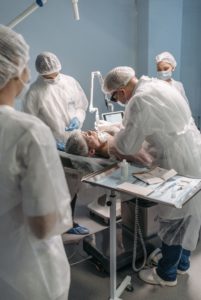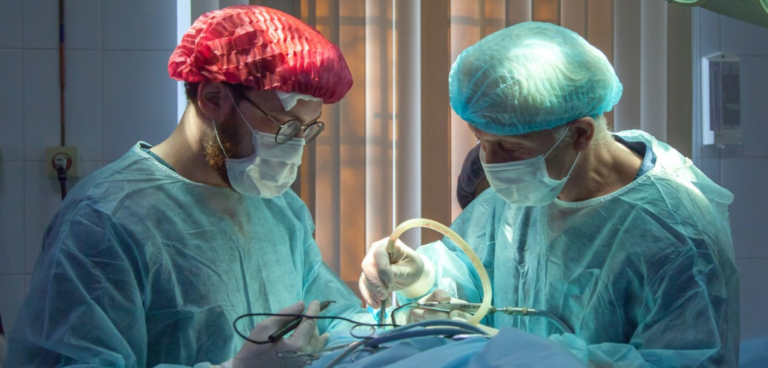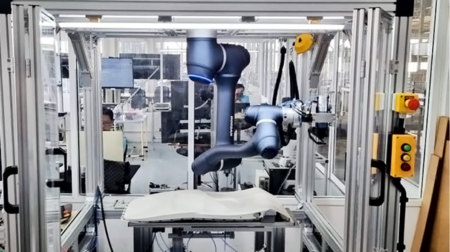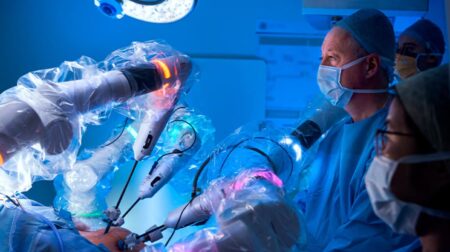Researchers from the National Robotarium, its industry partners and Edinburgh-based clinicians are creating a new robot-assisted surgery technique to improve cancer surgical outcomes and patient care.
The method has been awarded £1.25m and is funded by the Engineering and Physical Sciences Research Council, part of UK Research and Innovation.
It will be used during robotic surgery to help decide how much of the patient’s tissue is affected by cancer and should be removed. The new method aims to provide surgeons with real-time feedback, allowing for greater precision when differentiating normal from abnormal tissue.
The outer rim of tissue which the surgeon chooses to remove is known as the ‘surgical margin’. Currently, surgical margins are identified using the surgeon’s experience, preoperative imaging such as CT scans together with visual observations and, in open surgery, tactile ‘feel’.

Another method involves sending specimens during the operation to the pathology lab for ‘frozen section’ which takes 15-20 minutes. However, when undertaking ‘keyhole surgery’ using laparoscopic, endoscopic (flexible telescope) or robotic operations, surgeons can’t use ‘feel’ to determine tissue characteristics.
Combining engineering, clinical, and industrial skillsets, the new collaboration will allow mechanical measurements to be taken inside and around the surgical target. These will then be interpreted using a set of ‘mechanical intelligence’ algorithms. The data will provide clinicians with a clear indication of a tissue’s disease status and determine how much tissue to remove during the operation.
The research team will work alongside industry partners IntelliPalp Dx and CMR Surgical along with leading clinicians working in the Western General Hospital, Edinburgh.
Dr Yuhang Chen from the National Robotarium is leading the research. He said: “This new technique will offer surgeons a quantitative, real-time, reliable and evidence-based method for determining the optimal surgical margin to make when removing a tumour.
“Surgeons operating along a ‘keyhole’ or using techniques for minimally invasive surgery need to identify different structures or diseased areas, even when these look very similar. Our work is aimed at identifying the optimum margin in cancer surgery, to allow the removal of a tumour together with enough tissue to ensure the cancer is completely removed, but without excess being lost.
“We’re bringing together expertise from laser manufacturing, fibre-optic sensors, micromechanical probing and computational modelling to create a mechanical ‘imaging’ probe capable of detecting cancerous tissue that can be used with a standard minimally-invasive surgery instrument.
“Coupled to this, we’ll be building a ‘mechanically-intelligent’ data modelling framework and will integrate it into the probe operation for tumour identification and surgical margin assessment. This will effectively eliminate the margin of error for surgeons, giving them confidence that they have removed the correct amount of tissue during the operation itself and reduce the need for further invasive surgery for patients.”
The project will use the manufacturing-related facilities at the National Robotarium, including laser precision manufacturing equipment and related instrumentation, coupled with expertise in miniature mechanical actuators.








